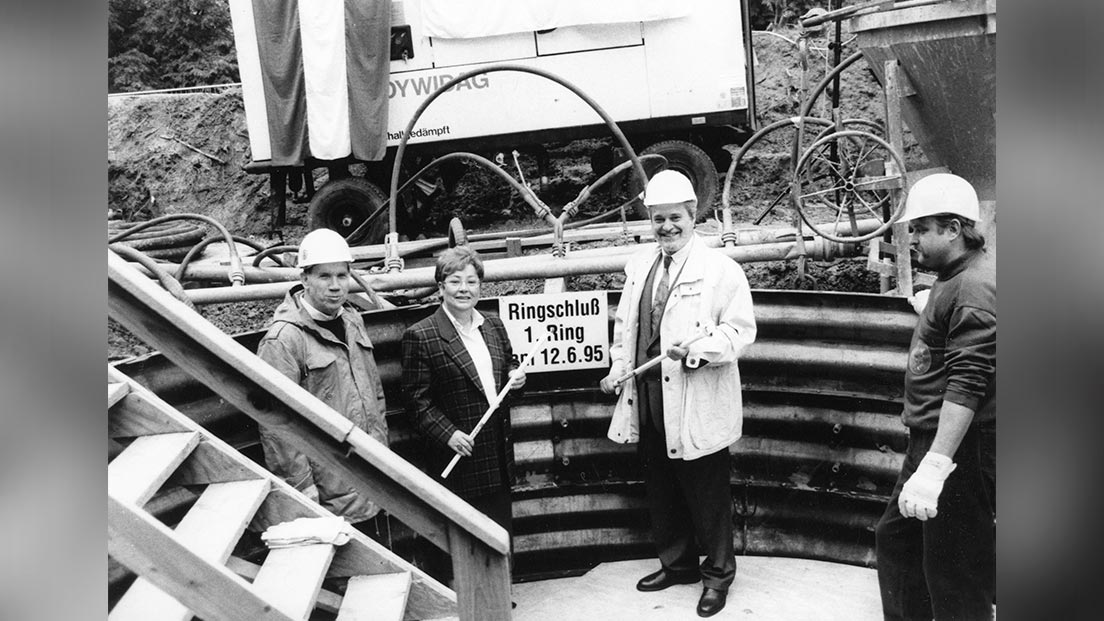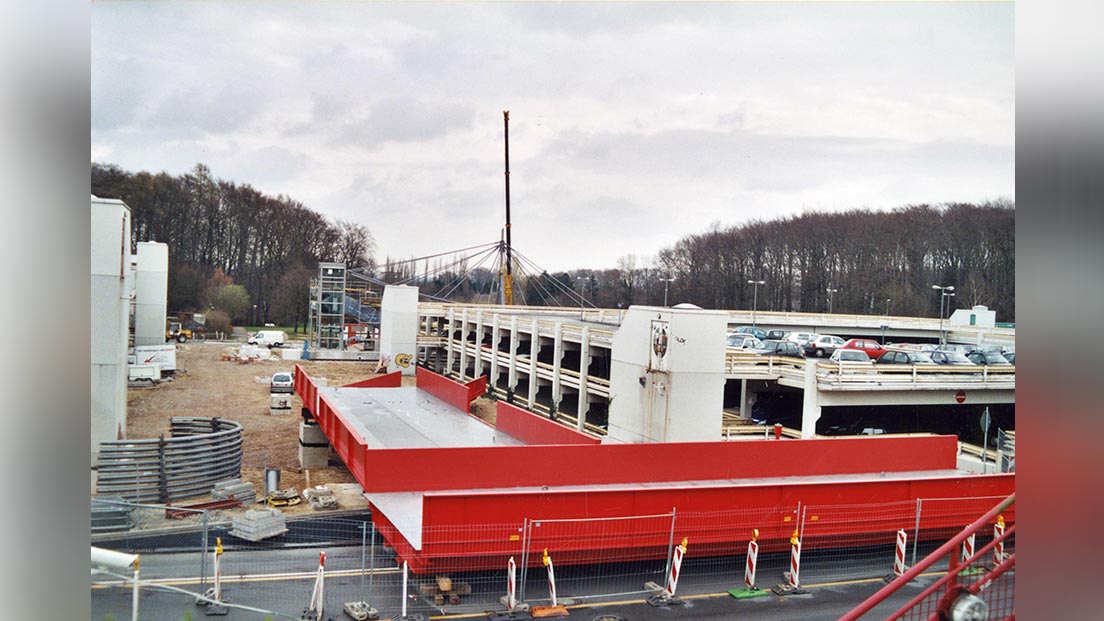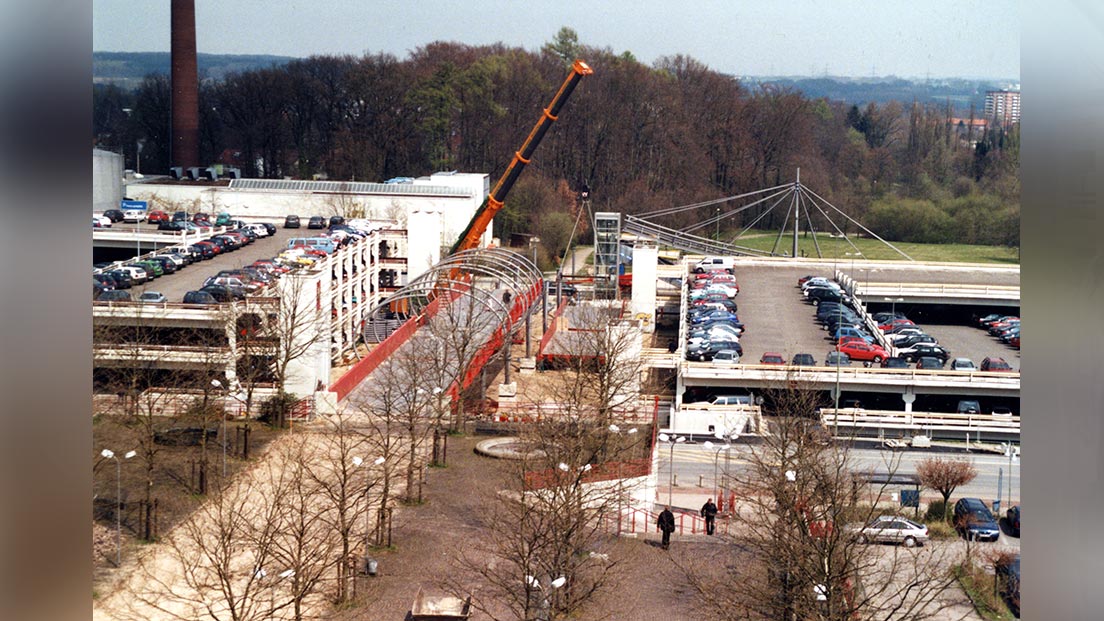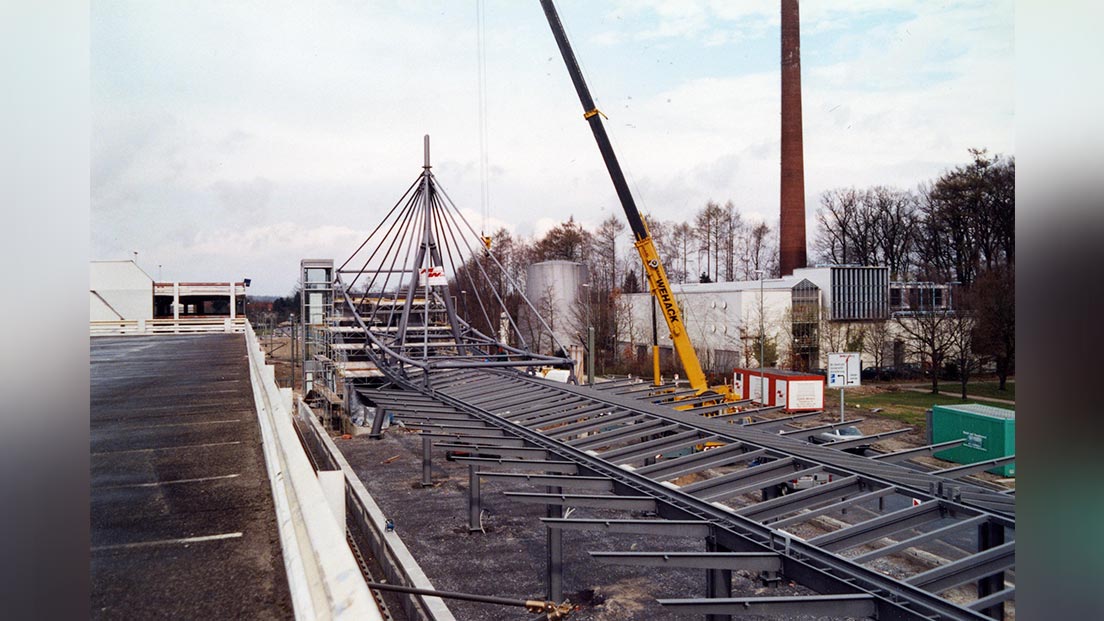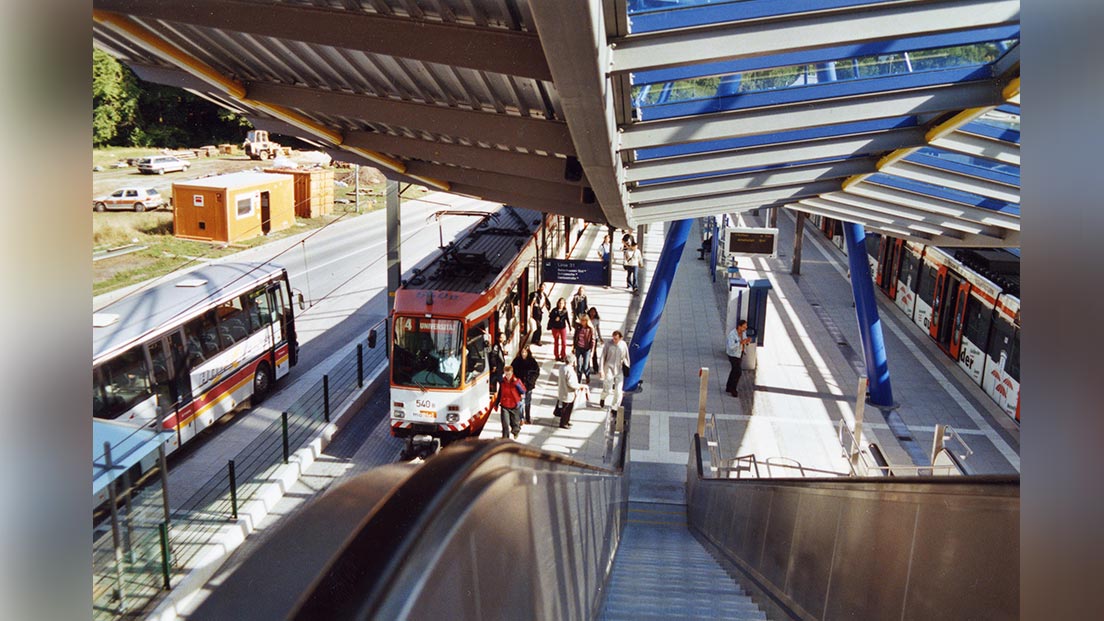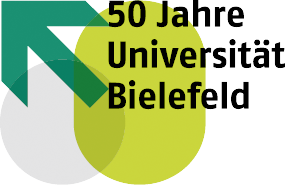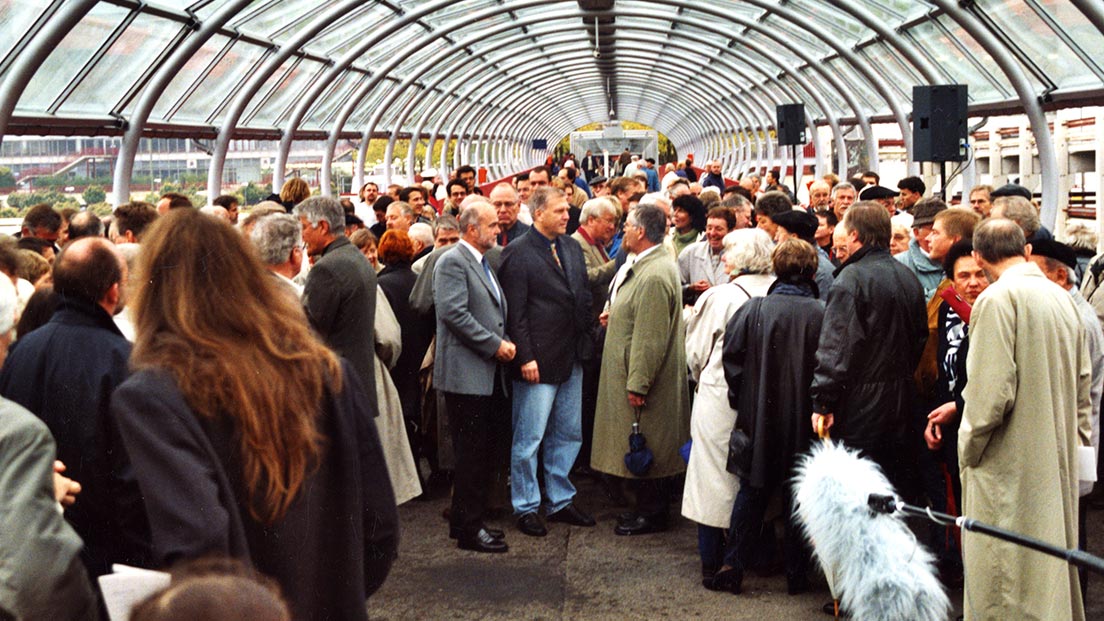
–
Photo: Norma Langohr
Source: Universitätsarchiv Bielefeld, FOS 00520
The winning design for the main university building in 1969 already included provision for a tram stop on the northern Universitätsstraße, which was to be built by the mid-1970s. Shortly after, however, concerns arose from the representatives of the natural science faculties that the tram could possibly disturb the delicate scientific measuring instruments. This, combined with scarce financial resources, led to the suspension of further plans.
In the following years, the subject of trams and tram stops fell by the wayside. The minutes from a meeting of September 1974 basically lay out the situation which remained unchanged until the completion of the university tram line: access to the university site was to be exclusively by road, a bridge for pedestrians would cross the southern Universitätsstrasse to the University forecourt, and the construction of a tram line was promised for the mid-1990s.
After years of stagnation, the discussion finally gains momentum
As a result, generations of students commuted to the ever-growing University by bicycle, in their own cars or in overcrowded buses. Eventually, express buses also went directly from the main railway station only to get stuck in the almost obligatory traffic jam. It was only in the 1990s, as predicted in 1974, after the opening of the tram system in Bielefeld and on the initiative of the student group for transport, the “Verkehrs-AG” of the AStA (student union), that the discussion was once again on the table. This was followed by tough negotiations over whether the tram should be close to or further away from the University. For the closer variant spoke the greater safety for users due to shorter distances. The disruption of the scientific equipment and the possibility of using the area between the bus stop and the main entrance for other planning purposes were arguments for the more distant variant.

–
Source: Universitätsarchiv Bielefeld, PL3/227
Schließlich erzielte man eine Lösung, die sich übrigens mit der deckte, die die Universitätsarchitekten schon 1969 vorgesehen hatten. Die Erschließung über die nördliche Universitätsstraße mit einem noch als akzeptabel anzusehenden Weg zum Haupteingang der Universität hatte sich durchgesetzt. Heute ist die Linie 4 mit über 33.000 beförderten Personen pro Semesterwerktag der meistgenutzte Ast der Bielefelder Stadtbahn.
–
Source: Universitätsarchiv Bielefeld, FS 230

